[Jim Lattis, Director, Space Place, University of Wisconsin-Madison]
Well, good evening, welcome to U.W. Space Place. It’s – our – our guest speaker night, second Tuesday of the month. And I’m pleased tonight to introduce our speaker, Professor Simon Gilroy, who’s in the U.W.-Madison Department of Botany, and he does some fascinating stuff that he’s going to tell us about regarding what happens to plants when you try to put them in space, and he told me just before, we were chatting before, he’s just gotten into a new project where he’s going to be growing cotton in space. So, it – he’s going to have quite a garden going before – before he’s done there. So, join me in welcoming Professor Gilroy.
[applause]
[Simon Gilroy, Professor, Department of Botany, University of Wisconsin-Madison]
All right, good.
Well, thanks for the invitation, and what I thought I’d do tonight is take us on a journey, quite a long journey, cause we’re going to start out on Earth, end up on Mars, do a little bit of space stuff in-between, and I always like to start talks by sort of setting a perspective.
So, this is a picture of the Milky Way.
[slide featuring a photo of the Milky Way galaxy taken from an observatory in Nevada]
This is taken from Nevada. That’s a 54-second exposure. That you can see with your naked eye as you are standing on the surface of – of this planet. And notice that it’s pretty awesome. I kind of like to go and see that.
[new slide featuring a reconstructed photo of what the Milky Way galaxy would look like as an oval construct]
This is what it really looks like. This is the Milky Way. This is a – the reconstruction of what the Milky Way looks like from the European Space Agency’s GAIA satellite taken about 1.7 billion stars, pictures over many years, and reconstructed what it looks like. And it’s pretty mind-numbing. It was released just like a week ago, and people are already going, well, this is my career now, is analyzing the map that’s come from this – this image.
And you can see some pretty awesome stuff down in that, towards the bottom right-hand corner, you can see the – the – the Magellanic Clouds. There’s the Galactic Plane across the middle. There’s the cunningly-named –
[Simon Gilroy]
– Galactic Center at the center. I like that, astronomers are awesome. The – and the black stuff is dust which was in the way of – of the stars, and there’s like – this is what the – this is the best view of the Milky Way. This is where we live. But no human eyes have ever seen this, right? This is a reconstruction that a satellite has produced by an enormous amount of data. And it’s awesome, right? This has not been available up until literally just a couple of weeks ago.
So, but the Milky Way’s big, and mind-numbingly big. Billions of stars. And I – I, you know, I do one, two, many. And so, 1.7 billion really doesn’t mean anything to me. I just know it’s a big number. So, let’s – lets pull back-in a little bit and a bit closer to home, so I thought I would take a picture of Pluto from my back garden. And there it is.
[slide featuring a black screen]
[laughter]
And youll – you can’t see Pluto with your naked eye from –
[Simon Gilroy]
– the surface of the Earth. Here is actually, really is a picture of Pluto. This was taken with –
[slide featuring a photo taken from a telescope of stars and Pluto with Pluto denoted by a carrot and the word Pluto]
– a 14-inch telescope. This was about a ten-minute exposure, and you can see Pluto from the surface of the Earth, with a bit of technology.
But this isn’t really what it looks like.
[slide featuring a detailed photo of Pluto taken from a high-powered telescope]
That is what it really looks like, alright? And that is a picture of the surface of Pluto, and that is mind-numbing. Because the detail that you can see there you can’t see from the surface of the Earth. And the reason that we have that picture is –
[the slide animates on a photo of the New Horizons space probe to the top right of the photo of Pluto]
– because New Horizons, that space probe, has flown out to – to Pluto and taken images. And, yeah –
[Simon Gilroy]
– it’s a planet, alright? People can say it’s not a planet, it looks like a planet to me, I’m going with it being a planet.
[laughter]
Alright, maybe it isn’t a planet, but like a – it – it’s absolutely awesome, but no human eyes have seen that. That is us using technology to extend our view of what the – the solar system looks like, and it is absolutely remarkable. It’s kind of like, Wow, wow, it’s an awesome time to be alive!
People have never seen these kinds of images before, until we got out there with a piece of technology. So now, let’s – Pluto’s still a long way away. You can’t see it from Earth without a telescope. You can’t see it with your naked eye. Let’s come back a little bit further and set some, the – the – some – some scale. Let’s get back to something in our neighborhood. The Moon, alright?
And this is a movie.
[slide featuring a movie of the Earthrise over the surface of the Moon]
This was taken by a lunar probe which is flying over the surface of the Moon. This is Japanese Space Agency, and they just happened to be flying in exactly the right place at exactly the right time, and so this is Earthrise on the Moon.
[Audience member]
Wow!
[Simon Gilroy]
Maybe I should just stop there, right? Okay, I’m done. Is that – that’s just like – isn’t that absolutely remarkable? That is what it looks like to stand on the surface of the Moon and see the Earth rise above the Moon. And you’re all expecting me to say, No human eyes have ever seen that, but that would be wrong, right?
Because this is the movie from a modern satellite going around doing its business on the – the – for the Moon, but that image has been taken before, and it’s one of the most iconic images of space flight.
[slide featuring two photos, one of the crew of the Apollo 8 mission – Jim Lovell, Bill Anders, and Frank Borman, and the second of the iconic photo of the Earthrise over the Moon taken by the Apollo crew]
And it was taken by Apollo 8, the first people to orbit the Moon. Apollo 8, right? 1960s, and Bill Anders took a picture of the Moonrise over the Moon, and it’s become kind of one of the posters for what it means to travel away from the Earth and see what the rest of the – the solar system looks like. So, that is what Earthrise looks like on the Moon, but what does it look like on Mars, then?
[slide featuring a detailed satellite photo of Mars with the phrase What about Mars? superimposed on the photo]
What about Mars? So, this is a – a picture of Mars. This is taken by a whole bunch of – of collaging of – of separate images that were taken by the – the Viking probes in the 1970s, and it gives you a really nice picture of what the surface of Mars looks like, but what does it look like if you were standing on the surface of Mars and see the Earth rise?
[slide featuring a tiny photo of the Earth with a You are here box around it and then an arrow pointing to a small speck that is Mars]
And this is what it looks like.
[laughter]
And this was – this – this is the first ever picture that was taken of the Earth from Mars. And this – this was taken by the Spirit –
[a photo of the Mars rover, Spirit, is superimposed on the You are here photo]
– Exploration Rover in 2004. And that little dot there, that is us. So, if you were a Martian, that would be the closest that you could get to seeing us on the – the Earth. And so, it’s not –
[Simon Gilroy]
– quite as impressive as the Moon, and the Earthrise above the Moon, but remember, it’s a lot further away. And that’s really the point that I want to get to.
So, this was 2004, and the Spirit Rover, and is just like a – this picture is a remarkable picture if you think about it. There’s – there’s a Rover turned around pointing at us on Mars, taking a picture of us. And if you wave, it can’t see you.
However, technology moves on. And we all know now, there is this Rover sitting on the Moon – on the –
[slide featuring a selfie photo of the Mars rover, Curiosity, on the surface of Mars]
– surface of Mars. This is the Curiosity rover. This is its selfie. Every so often, it stops and takes a selfie. And this is – so, this is absolutely a picture of a Rover on the surface of Mars. And if you look off down towards sort of the left-hand side, down at like, whatever it would be, like seven o’clock, eight o’clock, there’s a little hole where it’s drilled a hole to sample the surface of Mars, that’s Mojave.
But there’s a couple questions that come out of this. One is, how did it take the selfie? If there was a dude there with an iPhone taking that picture, our lives would change. But there is no dude, and it’s really awesome. It’s a very clever piece of montaging together many, many pictures from the Rover to get that selfie. There is no one else there.
The other question is, right? We have moved on ten years. This is 2000, this – I think this picture is from 2015. The – the cameras on the Rovers are now way better. It’s ten, a decade’s worth of advance of technology. What does the Earth from Mars look like?
[slide featuring a photo of Earth taken from the Mars Curiosity rover which appears as a tiny speck in the sky]
There it is.
[laughter]
Kind of looks the same. The – the quality of the picture, way better. Go – go and look at a – a – a cell phone picture from a decade ago and compare it with one you get now. The cameras have got a lot better, but the distance hasn’t changed. And so, that’s – thats the – the conundrum that I’m interested in because I would like people to walk on the surface of Mars, but it’s a long way away, and there are two things that fight against that eventuality happening.
One of them is technology, which is the rockets and the – the transport and the infrastructure that keeps you – gets you there, and the other one is, how do you stay alive once you’re there? And I’m kind of – I like food, I think probably everyone here likes food, and that whole thing of how do you feed yourself, how do you get the atmosphere once you’re on Mars? That is kind of a big deal, and that’s – thats where we’re going to start to – to move towards. Alright.
So, the Earth is a long way away from Mars, alright? The Earth is actually a long way away from the Moon as well.
[slide featuring a photo of the Moon next to a composite photo of Mars with a photo of the Earth peeking out from the bottom of the slide]
And again, the numbers, I don’t – they just – they don’t mean anything because they get too big. So, whats, the Moon’s about 240 thousand miles away, Mars, when it’s closest to us, is like 34 million miles away, and I don’t know what 34 million miles means. It’s just a long way. So, I tried to put it in – think of some kind of a relatable. There isn’t really a relatable about it, but let’s see. You know we say, “Well, it happened in the blink of an eye.” Alright? Let’s take a rocket and get it to escape velocity, so what are we going like, 25 thousand miles an hour. And then –
[slide animates on an illustrated eye that blinks once]
– there’s a blink of an eye. If you were on that rocket in that blink of an eye, you would have traveled about one and a half miles. Alright?
So, think now, think of you being in your car, and you blinking, and you’re one and a half miles down the road. Like roll on, self-driving cars, is what I say, cause, just the- it’s just – that rocket is moving unbelievably fast. Yet, it will take a few days to get to the Moon. It’ll take like nine months to get to Mars. The distances are just unbelievably large.
And so, the reality is, is we have the technology to get – we’ve already been there, alright? We know that we have the technology to do it.
[two illustrations of the Falcon Heavy rocket by Space X animate on the slide pointing towards the Moon and Mars, respectively]
And so, things like, the Falcon Heavy, which just launched from SpaceX, this massive rocket has all of the stuff you need to begin to start making that journey all the way to Mars. N.A.S.A.’s space launch system, that’s what it’s designed to do. Go on big –
[Simon Gilroy]
– big, long journeys, alright? So, the engineering is there. But the conundrum is going to be, the – the – the time that you are away from the Earth, and from this, the cradle that we live in, this awesome place that keeps us alive and has the life support system that we work with; the time that you’re away from there begins to get so long that the idea that you could resupply the mission constantly becomes less and less tenable. And so, you can imagine that when we’re on the Moon, you can pack rockets full of Twinkies and chocolate and shoot them up to the Moon, alright? But once you get to Mars, and you’re talking about these immensely long distances and immensely long durations, you need to have some kind of self-sufficiency. Some kind of in situ use of what’s around you to reduce that requirement. Because it’s fantastically expensive to send stuff into space, alright? And so, it’s gonna be prohibitively expensive to constantly resupply a permanent mission on somewhere like Mars. So-
Well, let’s think back. Apollo 11, 1969 –
[slide titled Apollo 11 – featuring a photograph of the Moon and the date, July 20,1969, on the left and a twilight photograph of the Apollo 11 rocket sitting on the launchpad on the right]
– that was when we moved off the surface of the Earth and somebody stood somewhere else.
[new slide featuring a photo of Neil Armstrong in his spacesuit on the surface of the Moon]
And this was just absolutely a game-changer. The first human being who has left the Earth and stood somewhere else, on the surface of – of the Moon.
And that whole program proved that we can do it, and we have a lot better technology now, and it was one small step for a man. But what was much, much more important –
[new slide featuring a photo of Neil Armstrongs first footprint on the Moon and the quote One small step for (a) man, One giant opportunity to dig in space dirt.]
– is it was one giant leap for digging around on the surface of the Moon. And if you’re thinking about a permanent base on the Moon, or a long-term presence on the Moon, or you think about a long-term presence on Mars, that dust, the – the regolith, the soil of the Moon or Mars, becomes a really important resource if you’re thinking that the way you’re going to provide food and the way that you’re going to provide oxygen is through growing plants. And that’s a big thrust to work out whether that’s a realistic idea on the surface of the Moon, on the surface of Mars.
Do you have to take your dirt with you? That is the big question.
So, we have lunar soil. I’m going to call it soil from now on. That’s kind of like, ugh, but, it’s a good word. It’s not really soil. But we have lunar stuff. And it can – and it’s come back, and you can go –
[new slide titled, Lunar Regolith 40050 Natural History Museum, featuring a photograph of lunar soil encased in the Natural History Museum]
– and look at it if you want to. There’s a bit of it in the Natural History Museum.
And so, we’ve been able to analyze what the components of that – that lunar – lunar soil is. And you can do the chemistry and that – and we can get a pretty good idea about what it could support if you were using it as sort of the substrate for growing plants.
[new slide titled, SiO2 (44.7%) and Al2O3 (14.9%), featuring two microscopic photos of lunar soil noting that it is highly porous and jagged]
And so, for – for chemistry, you know, it’s a bit of silicone, and a bit of aluminum. It – it’s got some interesting properties, the – the dust, because there is no weathering on the Moon, and so all of the particles that we have on the – the Earth, the bits of rock, they get weathered, so they kind of get smooth. The particles on the Moon are really jagged because they’re not smoothed down. And so, there’s some practical things that that comes with, not just about growing plants, but if – if you get this stuff stuck in your space suit, eventually it gunges up your space suit. So, all those movies you see where they fling open the door of the Rover and climb in and shut the door, right, in their space suits.
[imitates a game show wrong answer buzzer]
[Simon Gilroy]
Because eventually the switches won’t work inside the Rover, because they’ll all be stuck together with all of this stuff, alright? So, there’s lots of – of unexpected consequences that come along with moving away from the surface of the Earth. But if we think about now, specifically, growing plants, and growing plants maybe in this moony, dusty stuff.
Well, when it came back –
[slide titled, Lunar Receiving Laboratory, featuring two black and white photos of scientists working with lunar samples]
– it went to a thing called the Lunar Receiving Laboratory, which is where Johnson Space Center is now, and it was handled very carefully to protect the Earth from whatever was in there. And they were worried about like, bugs jumping out of like, things bursting out of their chest, you know, and all of the weird, all of the things that you – all of the movies, right, everyone had watched them, and they knew that stuff from space must be dangerous, and so they protected the Earth from the stuff from space.
Now we kind of think the other way around. We have to protect space environments from the Earth. Because if there would be microbes in that stuff that came back from the Moon, that would mean that there was life somewhere else other than the Earth. And if you want to guarantee where you can find life, find out where people have been, cause we’re kind of dirty, alright? And so, there’s bound to be remnants of life or evidence of life where we have been, because we take it with us with all the microbes and stuff that come with us. So, this turned from protecting the Earth to protecting the samples from the Moon. And they were very, very, precious. The question that came up almost immediately was, Could you grow plants in there?
[new slide featuring a scientist with sealed jars full of plants at the Lunar Receiving Lab]
And so, they took the moon dust and started adding it to plants, ’cause there was a question, “Is it just toxic for an unknown reason?” Absolutely not. Okay? And so, they grew a lot of plants. It was very, very different – there was not enough to sort of like, fill up a pot and then put a – put a radish in there –
[new slide titled, Radish grown after contact with lunar dust, featuring a photo of a radish growing in a jar that has elements of lunar dust in it]
– so, what they did is they put a radish in soil and then rubbed moon dust over the surface of it. And lo and behold, it’s perfectly fine, alright? So, the – the moon dust is not toxic. We know chemically what it is. And it turns out that the – the – this idea that you could use it as a substrate kind of will work.
[new slide titled, Haughton impact crater, Canadian Artic, featuring a large photo of a scientist walking along the crater with three smaller photos along the bottom of the slide featuring photos of the various plants that are being grown for research]
Alright. So, we don’t have a lot of the – the moon regolith, but what we do have is places on Earth where there have been things like impacts where the chemistry and the composition of the rock is very much like what we know what the Moon is like, so you can go to the Canadian Arctic and you can find things like impact craters, get the – the material from there, grind it up, and make it into your lunar sort of analog, and then plant plants in there. And it – and here are three pictures of three plants. The one on the left is in an analog of the lunar regolith which has been blended from lots of different places to be chemically like it is on the Moon. The – the plant growing in the middle is from some ground-up rock that’s from the – that impact crater which looks chemically really like what we find on the Moon, and the one on the right is growing in compost. Alright?
[Simon Gilroy]
And so, the – the one thing there, they’re all alive, they’re all – they – the one growing in compost kind of looks better, right? I think even the non-horticulturists among you –
[laughter]
– can draw the conclusion that we should be growing things in compost, alright? But these two on the left, they’re kind of okay.
[return to the Haughton impact crater slide, now with a bag of fertilizer superimposed on the top photo]
And so, if you do the analysis, then we can – we know what’s missing, why these plants are not thriving. And so, if you buy a bag of fertilizer, just go to any home store, you buy a bag of fertilizer, it’ll have three numbers on it, something like 10-10-10, and those denote the amount, the relative proportions of nitrogen, phosphorous, and potassium. And those are needed by plants in a large amount, and it turns out that the Moon doesn’t have quite enough of them. And the other one which is missing is it doesn’t have quite enough sulfur. So, we could totally go to the Moon, and if we brought a bit of fertilizer with us, we would have the makings of being able to grow plants in situ. Now, we’re not going to, like, go out, take a bunch of seeds of lettuce and just like spread them around on the Moon –
[Simon Gilroy]
– right, and then water them, so it’s much more likely that it’s going to be something like this.
[slide titled, Lunar Greenhouse, featuring a time lapse movie of scientists and workers constructing a lunar greenhouse and several shots of the lunar greenhouse at work]
This is a sort of prefabricated greenhouse that’s designed for use in an environment like the Moon or Mars. It gets draped over with some kind of cover, but remember, it’s only holding one atmosphere of pressure, so it doesn’t have to be a really massive structure. And the likelihood is that things are going to be grown hydroponically and they’re going to be grown under artificial lights and we can talk a little bit in a minute about why that’s true.
So, thats kind of –
[return to the What about Mars? slide]
– if that’s true about the Moon, then what about Mars? Could you do the same thing in Mars? Well, the conundrum with Mars is that we haven’t got samples back, so –
[Simon Gilroy]
– we don’t have as good a feel for what it’s gonna be like on Mars.
Some of you may recognize this guy, Elon Musk.
[return to the composite photo of Mars with the phrase, “What about Mars?” replaced by a small inset photo of Elon Musk and type identifying him]
He has a great set of quotes. And he has a really awesome one about – about Mars –
[a quote from Elon Musk, “It’s a fixer-upper of a planet but we could make it work” animates on over the composite photo of Mars]
– kind of “a fixer-upper of a planet, but you know, I think we could make it work. A bit of paint, you know. A bit of atmosphere, maybe some liquid water.
So, many –
[new slide featuring promotional art for the Matt Damon movie “The Martian”]
– of you will remember this documentary that came out a couple of years ago.
[laughter]
It’s not a documentary. No one has been to Mars. We’ve already established that. So, this was about growing plants on Mars. And it’s pretty –
[Simon Gilroy]
– there’s a lot of accuracy in it. It’s not – “The Martian” was actually really good. If you’re a scientist in area and you watched “The Martian,” you weren’t cringing all that much.
This is an unadulterated movie promo still –
[slide featuring a promotional still from the movie “The Martian” featuring Matt Damon in a spacesuit walking on the surface of “Mars”]
– from the – from the movie. And now, alright, they – they had to find somewhere that looked like Mars on Earth, which is really hard to do, but this is a place called Wadi Rum in Jordan. Super desolate place. I – and they get the actor out there to do all his – his like, walking around on Mars. And now, I’m going to show you something, and you will not be able to unsee this, alright. So, if you really like this movie, shut your eyes, alright? Because this is an unadulterated still from the movie about what it’s like to be on Mars.
[the still zooms into a plant on the promotional image from the movie, “The Martian”]
And there’s a plant growing in the middle of it.
[laughter]
So, the – ’cause plants are awesome! That’s why I work on them.
They just crop up everywhere. They are super resilient, if you give them enough resources, they will do their thing. So, if it was Mars, could that happen? No, because plants need the atmosphere and liquid water as well, and that’s kind of tricky on Mars. But if we think about the Martian regolith as being soil, what about that?
[new slide titled, “Can plants grow with Mars soil?” featuring another promotional still from the movie, “The Martian” with Matt Damon’s character in his greenhouse on Mars and on the right is a list of essential plant nutrients – both macro – oxygen, carbon, hydrogen, nitrogen, potassium, phosphorus, calcium, magnesium, and sulfur – and micro – iron, manganese, zinc, copper, molybdenum, boron, and chlorine]
And it turns out that if you look at all the mineral requirements for what you need to grow, Martian soil has what it takes, alright. So, “The Martian” was not so far-fetched. There are a couple of just tiny – tiny little technical issues, like the soil is toxic to plants, but, alright, but it’s very, very salty, so that would have to be dealt with. And also, because of the chemistry of what goes on, it’s got high levels of perchlorates. And perchlorates, where do you find those? Rocket fuel, alright. So, there are some technical issues, but it – but like, it’s there. In situ resource usage is not far-fetched for Mars.
[new slide with an artist’s rendition of what growing plants hydroponically on Mars would look like]
But this is probably more realistic about thinking about what, rather than just, like, shoveling Martian dirt into – into a greenhouse, probably more along the lines of – of hydroponics getting towards using more of the Martian resources. That looks kind of nice, doesn’t it? I could live there.
[new slide with an artist’s rendition of what a greenhouse on Mars would look like]
Or what about this? Wow, that looks awesome, alright. Those are artist impressions of what it would look like. There are some technical things which we’re going to have to overcome.
[new slide titled, Gardening on Mars, with an illustration of a tree superimposed on Mars and on the right a list of things needed to garden and their associated icons – light/sun, water/water drop, toxic “soil”/toxic symbol, soil – minerals/dirt, temperature/snowflake, radiation/radiation symbol, oxygen/O2, and gravity/Newton’s apple]
Alright. How do you do the lighting? Where’d you get the water? There’s a problem that the soil’s toxic. Are you going to use it? The minerals, just like on the – the Moon, are not quite in the right proportions, so we might have to take some fertilizer. It can be cold; it can be hot. There’s radiation. There’s no oxygen. There’s lower grav – it’s a whole bunch of stuff that all are going to impact on that idea that you can put that greenhouse on the surface of Mars and make it work.
But they’re all technical issues –
[Simon Gilroy]
– that we can solve and the reason we know that we can solve and understand some of them is that we’re making progress on a lot of those issues and a lot of that is coming from a place where we do our research, which is here on the International Space Station.
[slide featuring a photo of the International Space Station orbiting above the Earth]
And so, the Space Station has been a fantastic sort of proving ground for the technology for a self-sustaining way of getting plants to grow in harsh environments which are not exactly like the Earth, alright. So, we’re going to have the problems of no gravity, and all the thing – well, not no gravity, of – of microgravity and all the things that come with that. So, there’s a lot of interest about growing plants on the Space Station to work out how to sustain astronauts for long duration space missions, but also as a test bed for the technologies that we might use on the surface of the Moon or the surface of Mars. And so, here is –
[new slide featuring a photo of the plants in Ziploc bags stuck to a window on the International Space Station]
– the purpose-built growth facility on the Space Station for growing plants. It’s a bunch of Ziploc bags Velcroed to a window.
[laughter]
It’s not the growth facility. It’s just that the astronauts love having plants on the Space Station, so this is how they grow them sometimes. This is like somebody’s personal garden on the Space Station.
[new slide featuring a photo of a close-up of one of the Ziploc plants, Don Pettit’s “Space Zucchini”]
And some of you may remember a little while ago the Space Zucchini, which was an astronaut Don Pettit growing a zucchini in a Ziploc bag in space, and that thing grew to the point –
[new slide showing the flowering end of the “Space Zucchini”]
– where you could get flowers on it, alright. Plants are super resilient and able to deal with all the stresses that come out of – of this, and all that we’re trying to work out at the moment is how to grow them well in space. They will grow in space; the question is what is the equipment that you need to grow well in space? And so, just to give you an idea about –
[new slide featuring a photo of an astronaut on the I.S.S. looking at the plant growth facilities]
– kind of where we are at the moment, this is a Russian astronaut looking at a couple of – of the Lada growth facilities, longingly, I think is the word I would use there.
[laughter]
And it is real, like, even if you’re not going to eat them. Plants provide a link to Earth which is so deep psychological link for human beings. They – they are – even if they weren’t the source of food and oxygen, you would probably want to put them into space just to keep the astronauts sane and happy. So, these are relatively small growth chambers. They’ve – they’ve been a workhorse, they’ve been used a lot, but the technology –
[Simon Gilroy]
– has moved on, just like with the Rovers, and so this is the current technology. This is one extreme. This is a – a piece of equipment called “The Veggie” –
[slide with a photo of “The Veggie” on the International Space Station]
– and what you’re seeing at the very top. It’s about two foot by two foot of L.E.D. lights, and then the thing that looks like a – a shower curtain, is a kind of a shower curtain, and at the bottom is a tray. This is super simple, and the idea is to develop technology where it doesn’t cost a lot, it doesn’t take up a lot of space, but it can generate a lot of plant material.
[new slide with a photo of an astronaut looking at the bottom of “The Veggie” and two inset photos, one of plants in the bottom of “The Veggie” and another of a plant outside of “The Veggie”]
And so, give you an idea about what “The Veggie” looks like when it’s running, you can see there’s the L.E.D. lights. The picture in the bottom right-hand corner is a tray with a bunch of plants and things. This is a – a – a set of things called pillows, which are basically plastic bags with the media that the plant roots are going to grow in with a little hole in the top that you put the seed into and then you can see each of them has a little spout stemming off the side, and that’s where you physically inject the water to start them from growing. That’s one extreme, the simple extreme.
[new slide featuring a photo of the “Advanced Plant Habitat” on the I.S.S.]
And here is the other end. This is a – a – a thing called the Advanced Plant Habitat, very, very similar to “The Veggie,” this is like “Veggie” on steroids. It’s got like 80 sensors. It’s got a much more sophisticated control system. This is where you can really work out how plants are growing. But of course, this is way more overhead to run.
And to give you an idea about what you can get with “The Veggie” –
[slide featuring a movie made by N.A.S.A. about “The Veggie” called “First Veggies Grown, Harvested, and Eaten in Space”]
– this happened a couple of years ago.
[N.A.S.A. video with a New Age soundtrack]
[Astronaut #1]
Here are your red Romaine lettuce leaves.
[Sam Gilroy, under the video]
Right, Romaine lettuce in “The Veggie.”
[Astronaut #2]
Bon Appetit!
[Three astronauts simultaneously, “clinking” the Romaine lettuce pieces together like shot glasses]
Cheers!
[Astronauts laugh]
[Astronaut #1]
That’s awesome!
[Astronaut #3]
It’s good.
[Astronaut #2]
Tastes good.
[Astronaut #1]
Yeah.
[Astronaut #3]
I like that.
[Astronaut #1]
Kind of like arugula.
[Astronaut #1]
It’s fresh.
[N.A.S.A. movie fades to black]
[Simon Gilroy]
I just love it.
[new slide animates on the words “So why was that a big deal?”]
Its like a leaf of fresh lettuce in space is the equivalent of like, champagne.
And that was a big deal. And you can see it’s a big deal for the astronauts, because they finally get to eat something which isn’t freeze-dried and reconstituted. It’s a big deal for the plant biologists because it –
[Simon Gilroy]
– shows that you can grow plants to the size where you could – I mean, it’s not a field of lettuce. And the astronauts are not going to feed themselves just with the output of “The Veggie,” but as a proof of the idea that the technology works, and that you can grow things to the size where you can imagine astronauts supplementing their meals with them. And that the technology is moving along the – the lines that you can imagine growing large amounts of food, that kind of – of – of the proof of concept.
But what I thought would be nice to do is just take a couple of things about how plants work, and the things that we think about in the laboratory. Im – Im sorry, I’m going to show you one piece of data, alright? But, because I’m a scientist, so I have to. But there’s going to be no numbers, alright?
What – what are the kinds of things which impact on that ability to grow plants, and the kind of things that we think about? So, I’m just – Im going to pose three issues. I’m not going to answer them, because this is research, so we’re still at the – the stage of trying to work out what’s going on. But just to give you an idea about things that sort of happen in space that – that are – growing plants in space to – to feed astronauts is going to have to deal with.
So, what are the three things?
[slide featuring three icons, a water droplet for water, the radiation symbol for radiation, and the sun for lighting]
Water. Water is kind of freaky weird in space. I’m going to talk a little bit about that. Radiation. I’m just going to mention that and – and just put an idea into – into your heads. And the other one is lighting. And so, water and light are -are two biggies for plant biologists on Earth, just as like they’re gonna be in space. We already talked a little bit about the – the soil, alright, and that’s a big one for plants growing in – on – on the Earth. But radiation –
[Simon Gilroy]
– and space radiation is something that’s gonna be new. And so, we’ll think about these three now.
So, let’s just take the first one, take water. Just to give you an idea of – that watering a plant should be the easiest possible thing. You get a watering can, and you just tip it on its side, alright? How hard could that possibly be? Well, just to give you –
[slide with a movie of a hand holding an Alka-Seltzer tab next to a bubble of water]
– a feel for the fact that water moves in different ways in space to the way it moves on Earth. The reason the watering can works is because of gravity. Once you move into the International Space Station, everything’s in freefall, that force moving water around disappears and the things that make water move are things like creeping along surfaces by capillary forces, or pumps –
[Simon Gilroy]
– squirting things, alright? But gravity is not going to be your friend anymore because it’s not going to be there. The other thing that then disappears when you don’t have gravity, is things don’t float anymore, alright? There’s no buoyancy in space, because buoyancy works because things are less dense than the water that they’re sitting on, and so they rise. So, what happens to a bubble in space, alright?
[return to the slide off the movie with the Alka-Seltzer next to a bubble of water]
Well, this is astronaut, I think this is Don Pettit. That’s an Alka-Seltzer, and that’s a bubble of water, sitting, just floating there in space in the Space Station, and he’s going to just insert the Alka-Seltzer. The thing which happened really quickly is, watch when he first gets it in there, the bubble will grab hold of the Alka-Seltzer tablet, and then watch what happens to all the bubbles that form after that.
[movie plays showing the water bubble sucking the Alka-Seltzer tab in and the inside of the water bubble starts bubbling smaller bubbles]
So, it sucks it in, and then, well, the bubbles don’t rise to the top –
[the inside of the bubble starts foaming in place and keeps foaming indefinitely]
– because there is no top. And so, they just make a stable foam that lasts forever.
And the reason that the Alka-Seltzer is sucked in is because the reason that water moves around in space is because of capillary creeping along surfaces. So, when that Alka-Seltzer tablet hit the surface of the water, the water tried to creep along its surface, but it’s creeping along and pulling the Alka-Seltzer inside it. So, if you go swimming in space, in zero gravity, you will die.
[laughter]
So don’t do that, it would be kind of stupid. I’ve seen one movie where they’ve tried it. The reason you will die is the water will stick to you and it – it doesn’t go away. You can’t swim out of it, it sticks to you, and you will drown, a hundred percent guaranteed, alright? Alright. Which is why I’m not investing in swimming pools in space.
Alright, so, but like, water is going to be weird. Water is going to move in different ways. It’s complicated because people are still trying to understand it. How does that impact to plants?
[new slide showing the bottom of The Veggie and its plants]
Well, remember The Veggie with the root pillows where we have a matrix inside a plastic bag with a hole in the top with a seed, alright? So, you inject water into those to start everything growing, and you work out how much water you’re going to inject on the ground before you do the launch, because N.A.S.A. – prepare, prepare, prepare, alright? So, we know how much water these plants are gonna need to grow to their full extent. These are a bunch of zinnias. And the more perceptive horticulturally-oriented in the audience will notice not all of them are happy.
[laughter]
Especially the two that are dead, alright.
[laughter]
And so, this was a very well-worked-out experiment, we – the – the people who are running this absolutely knew how much water to add, but what happened was they injected the water, and then the plants started to accumulate water on the surface of the plant and then fungus started to grow on them. And it’s because water is moving through the plant and being used in a different way once you move into space. So, just that – that little thing of watering a plant becomes big deal and it’s really hard to do.
Now, how do you recover from this? You do what gardeners have done for – for – ever since there have been gardeners.
[new photo of astronaut, Scott Kelley, tending flowers on the International Space Station]
You just look after your plants. And so, this is Scott Kelley on the – the Space Station cleaning off the fungus from each of the individual zinnia plants and taking over the watering, taking over how fast the fans are going to move the air around, tinkering with everything to get it absolutely perfect. And, from those dead and dying plants –
[slide animates on the bouquet of zinnias that Scott Kelley made on the Space Station]
– he made a bouquet of zinnias for Valentine’s Day. Aww. He’s a big softie. [laughs]
It’s awesome though, right? Because its just like – it -it works.
[Audience member]
Can I ask something? You just raised the question about a fungus now. How did they – it’s another kind of plant – so, on some level, so how did it get there? And –
[Simon Gilroy]
Oh, so the – the Space Station is not a sterile environment. Absolutely.
[Simon Gilroy, on camera]
So, we have data on – on what the microbes are which are up there. And its – there’s a lot of stuff up there. People – the – the outside of the astronauts is not sterile when they go up, and a lot of the equipment is cleaned and sanitized but it’s – its – I always go, “It’s way more Star Wars than it is Star Trek.” Alright. It’s way dirtier than you – its – it’s not the clean environment that you think it might be for a space environment.
Alright.
Next one, radiation, I just want to mention it, because its kind of it – this is – this is a big unknown at the moment, because we are protected on the Earth from radiation. We have a magnetic field that – that is – I’m glad it’s there. If it wasn’t there, I wouldn’t be here talking to you. And so, radiation and how the galactic background of radiation interacts with biology is a really hard thing to study because if you study it on the Earth, you can’t study it very easily because you’re protected from it. Good thing. Alright.
So, now imagine that nine-month trip to Mars –
[slide with an illustration of a rocket travelling from the Earth to Mars]
– and there is a lot of radiation –
[slide animates on streaks of light as radiation as indicated by the radiation symbol]
– and you are way out of the Earth’s magnetic field. And the – the atmosphere, the air around us, it – it protects us as well, provides a bit of buffering. That’s disappeared. So that trip out, you can kind of do the calculations, and if you think about like a human being on the Earth, you’re being irradiated all the time. There’s a radon gas coming out of the Earth. There’s a little bit of radiation that – that we’re being exposed to the whole time. Just low background radiation, it’s just part of being alive.
If you, let’s say that you’re – you are 90 years old, and you’ve accumulated a background radiation dosage for 90 years on Earth. You’re going to get the equivalent amount of radiation during that nine-month trip, alright? And we don’t know what that’s going to do. And so, that’s a big unknown. But to think – think about how would you –
[new slide showing a hydroponic greenhouse]
– account for that? Well one idea, which is being actively pursued is, if you’re growing plants in hydroponics, put all of the plant hydroponics around the outside walls of the spacecraft, and the combination of the biology, the mass of the biology –
[Simon Gilroy]
– and especially the water will provide a shield for you. It’s – its using the – the equipment for two – two roles simultaneously, which is kind of cool.
There’s a lot more about radiation. That – that – that could be like, a whole 45-minute talk in itself, but we’ll – well – well ignore the rest of it for now, and just go onto the last one, because this one I think is really fascinating, alright?
Which is that we live on a planet with a 24-hour day. And that day/night cycle is intrinsic to how we operate. And this is what it looks like on the Space Station.
[slide titled, 4 hours on the International Space Station, featuring a time lapse movie of the Space Station showing a sunrise and sunset on Earth – but not on the Space Station]
Alright. This is just four hours, just taking the time-lapse movie from the images of the Space Station over four hours. And so, you have a sunrise and a sunset, alright. That period should be, you know, like, should be a 24-hour period for a day, and it’s about 90 minutes on the Space Station. And so, we know that that circadian rhythm is important for biology.
[new slide showing an astronaut working outside the Space Station while it was being built]
This is a picture I always put up because it puts it in great context. This is an astronaut working on the outside of – of the Columbus Laboratory when they were building the Space Station, doing a spacewalk, the most dangerous thing you could possibly imagine, spent hours and hours practicing it. Well, no, spent years practicing it. Spent hours putting on your space suit. You have a buddy who helps you do it, but that whole thing of like, dis-disruption of sleep cycles because the day’s not the right length and things like that. You will know that if you have a bad night’s sleep you can’t work properly the next day. So, imagine that for six months during a mission.
[the slide animates to an inset photo of the bottom of the astronauts feet where you can notice that his boots are on the wrong feet]
He put his boots on the wrong feet.
[laughter]
Now that is not a life-threatening thing, but it tells you like, it’s hard for biology, and one of the things which is being disrupted is circadian rhythms, alright? And you’re like, Okay, that makes sense for animals, because we – we sense the environment and we live this 24-hour day, and we get up and go to sleep. Can’t be true for plants. Alright.
Now I warned you I was going to show you one piece of data.
[new slide with two images of two plants where scientists changed the internal clock for the plants – one being 20 hours – 10 day/10 night – and one being 27 hours – 14 days/14nights – and showing that when a 20-hour plant is grown for 27 hours it dies while the 27-hour plants grown at 20 hours do just OK]
This is it, alright? So, you can take – we know how their internal clock, the circadian clock in plants works. And you can tinker with it. You can engineer it. And so, what a bunch of researchers did was they changed the clock inside these plants, and they made one set of plants think that the day should be 20 hours long, alright, and one set of plants think the day should be about 27 hours long. And then they grew them in pots, alright? So, they had the long clock and the short clock plants growing right next to each other, in competition.
And then they gave them different length days. And so, they gave them a 20-hour day, 10 hours day, 10 hours night. Or they gave them like 28 hours. Alright. And it turns out that the plants whose clock is close to 20 hours thrive with a 20-hour day, but don’t do too well with a 28-hour day, and the plants that have a long clock and – and expect the day to be 28 hours long, grow kind of okay at 20 hours, but they thrive at 28 hours. The clock is part and parcel of how biology works and it’s every bit as important for plants as it is for animals. And so, you can imagine, growing plants in an environment where the clock is not attuned to how they’re growing. In – in this one, the crazy result is – which is not crazy, it’s an awesome result, but it’s like, what, really? Is that the clock, the plant that has a 20-hour clock and thinks days should be 20 hours long, when it’s grown at 28 hours, ends up dying, alright? Which is not a good outcome. But it just shows you how linked to the day cycle plants are.
So, just to – to – to sort of continue with that – that theme, there’s –
[Simon Gilroy]
– one other thing that you might not think so much about how plants are trained to the – to the cradle of the Earth that we live in. But this is one of my favorite movies. This was taken by a – a plant biologist in Indiana –
[slide featuring a movie of a sunflower growing on the scientist porch]
– and this is almost an accidental movie, but it’s just going to show you a really, like, that plants know what the time of day is. So, this is a -a sunflower, it’s growing on his porch, he’s just got a – a camera, he’s going to do time-lapse. And the sun is going to rise to on the right-hand side, move over onto the left-hand side, and the plant is going to do a thing called solar tracking. Its leaves are gonna point towards the sun because it wants to use the sun to power photosynthesis. So, watch what happens as the sun moves overhead, because that’s kind of cool, just because the plant kind of knows the direction of light. But then watch what happens when the lights go out. And especially, keep watching until the sun comes up again, alright.
[plays movie and sunflower orients its leaves to where the sun is]
So, there’s the plant moving around, orienting its leaves to where the – the sun is, which is kind of overhead. You’ll see some shadows appearing as the sun moves towards me, and so the leaves start pointing, just kind of keeping to where the sun is, and it’s been a hard, hard day’s photosynthesis.
[as the sun goes down and it gets dark the sunflowers leaves droop down towards the ground]
Phew!
Alright, now keep watching. Cause the sun’s going to come up, we know, towards the right-hand side.
[as night turns to day the sunflowers leaves rise again and start to point towards the rising sun]
So, there’s the leaves going up, there they’re pointing towards where the sun will come up, and then the sun comes up. So, if you think about it, that plant not only knows the direction of where the sun is when the sun’s there. It’s also remembered where the sun is, and it knows the time of day, alright? And all of that plays into how you – you – you – use plants when you take them into this weird environment, putting them on the Space Station, and zipping them round at – at a day length of – of 90 minutes.
So, I think that’s – thats an awesome place to stop, so I should just finish with –
[Simon Gilroy]
– the best space quote, alright? And this is the space quote that sort of sets the scene for –
[slide featuring a photo of the Earth from Space]
– all of the space biology that I’ve been talking about.
[an inset portrait photo of Konstantin Tsiolkovsky appears in the upper left of the slide]
It’s from Konstantin Tsiolkovsky, one of the – the fathers of rocketry and space science, and his quote is,
[the following quote animates on top of the photo of the Earth from Space]
“The Earth is the cradle of humanity, but you can’t live in a cradle forever.” Alright. And so, I think with that awesome quote, I’ll stop and see if people have any questions.
[applause]
Search University Place Episodes
Related Stories from PBS Wisconsin's Blog

Donate to sign up. Activate and sign in to Passport. It's that easy to help PBS Wisconsin serve your community through media that educates, inspires, and entertains.
Make your membership gift today
Only for new users: Activate Passport using your code or email address
Already a member?
Look up my account
Need some help? Go to FAQ or visit PBS Passport Help
Need help accessing PBS Wisconsin anywhere?

Online Access | Platform & Device Access | Cable or Satellite Access | Over-The-Air Access
Visit Access Guide
Need help accessing PBS Wisconsin anywhere?

Visit Our
Live TV Access Guide
Online AccessPlatform & Device Access
Cable or Satellite Access
Over-The-Air Access
Visit Access Guide
 Passport
Passport







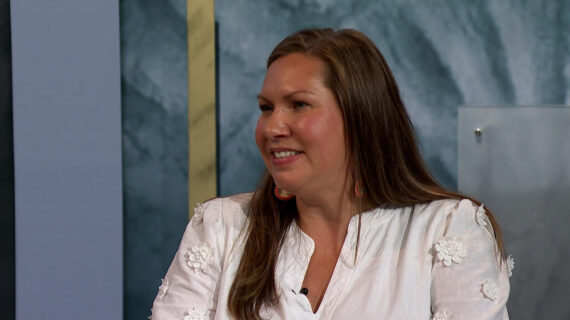
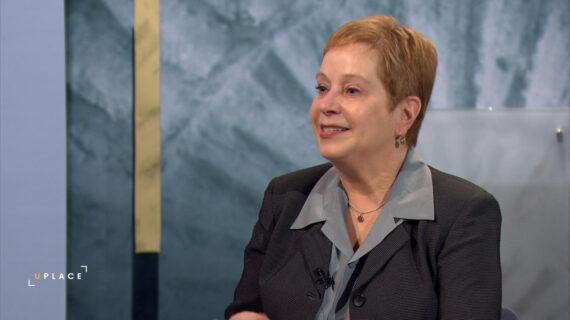

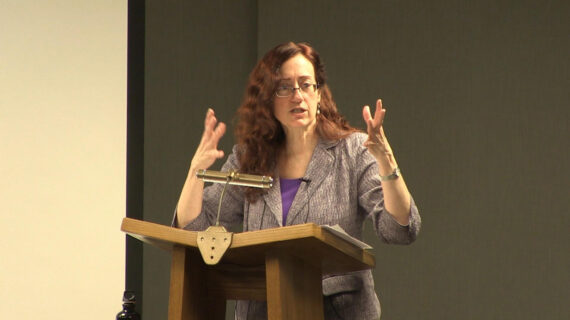
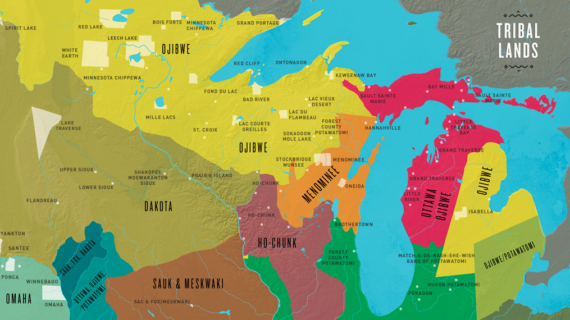

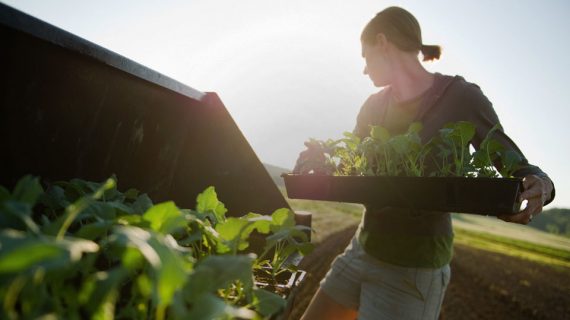
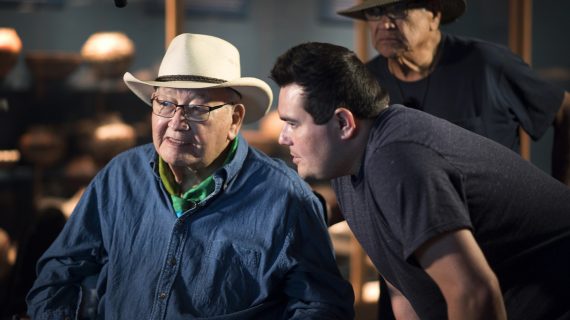



Follow Us